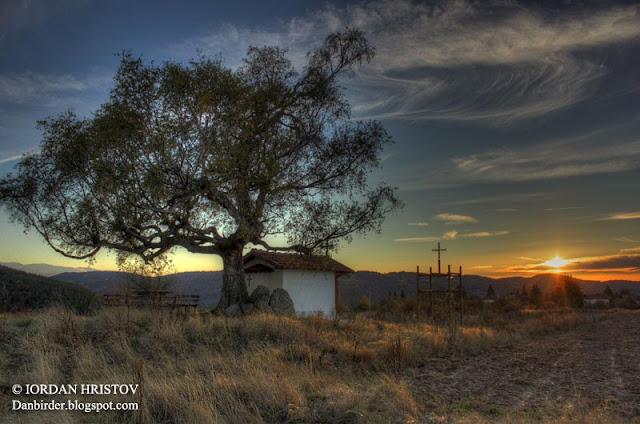You will be forwarded automatically in 5 seconds. We hope you will continue following us! If you want to speed up the transfer click here www.NatureMonitoring.com
петък, 27 декември 2013 г.
сряда, 18 декември 2013 г.
State of birds in Spain 2012
The end of the year is the time for reporting. After Great Britain and Bulgaria, Spain also published a report on the state of its birds.
The report covers all the monitoring schemes of the Spanish BirdLife Partner - SEO. These schemes are Sacre programme (bird trends in spring), Sacin programme (Bird trends in winter), Sacre / Sacin (Common bird trends in National Parks), Noctua programme (Nocturnal bird trends), Paser programme (Bird ringing in spring), Birds and climate (Bird phenology), Migra programme (Bird migration), Census (Bird population size), Waterbirds (Census of aquatic birds in winter), Atlas in winter / Atlas in spring (Bird distribution).
Here it is:
You can download the report from here.
The report covers all the monitoring schemes of the Spanish BirdLife Partner - SEO. These schemes are Sacre programme (bird trends in spring), Sacin programme (Bird trends in winter), Sacre / Sacin (Common bird trends in National Parks), Noctua programme (Nocturnal bird trends), Paser programme (Bird ringing in spring), Birds and climate (Bird phenology), Migra programme (Bird migration), Census (Bird population size), Waterbirds (Census of aquatic birds in winter), Atlas in winter / Atlas in spring (Bird distribution).
Here it is:
 |
Етикети:
2012,
atlas,
BirdLife,
census,
Common birds,
migra,
noctua,
passer,
SEO,
Spain,
state of birds,
trends,
waterbirds
сряда, 11 декември 2013 г.
New report on the state of common birds in Bulgaria published today
Bulgarian society for the protection of birds released a new report today. It features the trends of common birds in the country for nine year period 2005-2013. Some of the birds in decline are Lesser grey Shrike, House sparrow, Goldfinch and Quail.
The report is both in bulgarian and english so feel free to download it and read it.
понеделник, 9 декември 2013 г.
The state of UK's birds 2013: new report published

The latest State of the UK’s Birds report is published today, revealing that many of our most familiar countryside birds are undergoing plummeting populations.
A lovely addition to the new report is the data from the recently published Atlas of breeding birds in the UK and Ireland that features the trends in birds' distribution range.
Here are some of the worrying negative trends:
• Willow Tit has declined by 82 per cent since 1995 and halved its range over the last two decades;
• Turtle Dove endured a 95 per cent decline in numbers since 1995 and 51 per cent decline in range over the last 40 years;
• Common Cuckoo numbers have halved since 1995. Although its range has contracted by just eight per cent over the last 40 years, there are marked declines in abundance in the south and east of Britain;
• Whinchat has declined by 60 per cent since 1995 and by 48 per cent in range over the last 40 years;
• Starling's population has decreased by 53 per cent since 1995. The atlas reveals that its range has contracted by five per cent over the last 40 years with a steep decline in abundance in Britain;
• Wood Warbler underwent a 69 per cent decline since 1995 and range contraction of 34 per cent since the 1970s;
• Yellow Wagtail had a 45 per cent decline in numbers since 1995. The atlas reveals that the species' range has contracted by 32 per cent;
• Northern Lapwing suffered a 41 per cent population decline since 1995. The atlas reveals that their range has contracted by 18 per cent over the last 40 years, with the greatest losses in western Britain and Northern Ireland;
• Common Snipe's breeding range has shrunk by 31 per cent over the last 40 years;
• Grey Partridge has declined by 53 per cent since 1995 and range contracted by 40 per cent over the last 40 years;
• Corn Bunting has declined by 34 per cent since 1995. The atlas shows that the corn bunting’s distribution has contracted by 56 per cent over the last 40 years; and the species is now extinct in Ireland.
A lovely addition to the new report is the data from the recently published Atlas of breeding birds in the UK and Ireland that features the trends in birds' distribution range.
Here are some of the worrying negative trends:
• Willow Tit has declined by 82 per cent since 1995 and halved its range over the last two decades;
• Turtle Dove endured a 95 per cent decline in numbers since 1995 and 51 per cent decline in range over the last 40 years;
• Common Cuckoo numbers have halved since 1995. Although its range has contracted by just eight per cent over the last 40 years, there are marked declines in abundance in the south and east of Britain;
• Whinchat has declined by 60 per cent since 1995 and by 48 per cent in range over the last 40 years;
• Starling's population has decreased by 53 per cent since 1995. The atlas reveals that its range has contracted by five per cent over the last 40 years with a steep decline in abundance in Britain;
• Wood Warbler underwent a 69 per cent decline since 1995 and range contraction of 34 per cent since the 1970s;
• Yellow Wagtail had a 45 per cent decline in numbers since 1995. The atlas reveals that the species' range has contracted by 32 per cent;
• Northern Lapwing suffered a 41 per cent population decline since 1995. The atlas reveals that their range has contracted by 18 per cent over the last 40 years, with the greatest losses in western Britain and Northern Ireland;
• Common Snipe's breeding range has shrunk by 31 per cent over the last 40 years;
• Grey Partridge has declined by 53 per cent since 1995 and range contracted by 40 per cent over the last 40 years;
• Corn Bunting has declined by 34 per cent since 1995. The atlas shows that the corn bunting’s distribution has contracted by 56 per cent over the last 40 years; and the species is now extinct in Ireland.
Етикети:
birds,
birdwatching,
state,
The state of the UK's birds 2013,
trends,
UK
сряда, 27 ноември 2013 г.
Trip to Latvia
As I mentioned in one of my previous posts, I was on my way to Latvia. Well here I am. I was accommodated in a hotel Centra. It is meant to be a four star hotel but... I wouldn't give it 3 :) The welcoming was a bit strange. I had booked it via booking.com and the price was a bit higher than from the hotel website. So although I had booked and payed for the hotel I was asked at the reception for my credit card number. MMMM? Rather strange. I have never been asked something like this. They wanted "a deposit" for the mini bar". This is the first time ever that I have been asked something like this. I asked my colleague who stayed in the same hotel and he hasn't been asked. I came back to the same hotel for the last evening of my stay and I wasn't asked about the card number either. Was it something wrong with the guy at the reception I don't know. Next to him there was a pretty looking young blond girl who was definitely not working in the hotel. She looked like she was waiting for something... Well This whole thing made me to be a bit superstitious so to calm down the atmosphere we agreed that I would just leave some cash for a deposit and that would be it. On the next day everything was fine. I was given it back but it was quite an experience. So have it mind when travelling.
On the next day I met my colleagues and here we are on our way around the bogs, marshes and coastline of Latvia. Beautiful scenes. The plan was to do some birdwatching in the bright part of the day and do the work discussions when it is dark. Since it is now the end of November the day isn't going be quite long. At this time of the year it is usually around 7-8 hours long.
 The first place where we went was Kemeru-smardes bog national park which has a lovely logo. I was wondering why it is a woodpecker since the area is mainly a bog but then I realised that in the area you can see all the 9 species of woodpecker species in Latvia.
The first place where we went was Kemeru-smardes bog national park which has a lovely logo. I was wondering why it is a woodpecker since the area is mainly a bog but then I realised that in the area you can see all the 9 species of woodpecker species in Latvia.
In spring the area is good for the breeding wood sandpipers, golden plovers, cuckoos, skylarks, tree pipits, yellow wagtails and other birds. Now, it was totally empty. The forest at the entrance of the part had a couple of Great spotted Woodpeckers and Goldcrests but that's about it.
We walked along a recently renovated trail in the bog and went back. This bog is so called 'raised'. On the scheme below you can see what that means. The bog was formed in the preboreal age from a lake that must have existed at that time. The trail was built using well connected pieces of wood which seem to be mobile. Now it was very dry but in spring I would image the bog is rather wet and the water level raises. Thus the trail should not be left under water ;)
After looking around the bog we went to the visitors centre of the national park. It was closed but at least we saw what the building was like. The area is suitable for all the 9 species of woodpeckers you can find in Latvia. For a couple of minutes that we stayed around we saw only the middle spotted but there were singes of lesser spotted and a table suggesting the distribution of all the species.
Here is a lovely map of the area with a few birding locations ready to download as a pdf.
On the next day I met my colleagues and here we are on our way around the bogs, marshes and coastline of Latvia. Beautiful scenes. The plan was to do some birdwatching in the bright part of the day and do the work discussions when it is dark. Since it is now the end of November the day isn't going be quite long. At this time of the year it is usually around 7-8 hours long.
 The first place where we went was Kemeru-smardes bog national park which has a lovely logo. I was wondering why it is a woodpecker since the area is mainly a bog but then I realised that in the area you can see all the 9 species of woodpecker species in Latvia.
The first place where we went was Kemeru-smardes bog national park which has a lovely logo. I was wondering why it is a woodpecker since the area is mainly a bog but then I realised that in the area you can see all the 9 species of woodpecker species in Latvia.In spring the area is good for the breeding wood sandpipers, golden plovers, cuckoos, skylarks, tree pipits, yellow wagtails and other birds. Now, it was totally empty. The forest at the entrance of the part had a couple of Great spotted Woodpeckers and Goldcrests but that's about it.
We walked along a recently renovated trail in the bog and went back. This bog is so called 'raised'. On the scheme below you can see what that means. The bog was formed in the preboreal age from a lake that must have existed at that time. The trail was built using well connected pieces of wood which seem to be mobile. Now it was very dry but in spring I would image the bog is rather wet and the water level raises. Thus the trail should not be left under water ;)
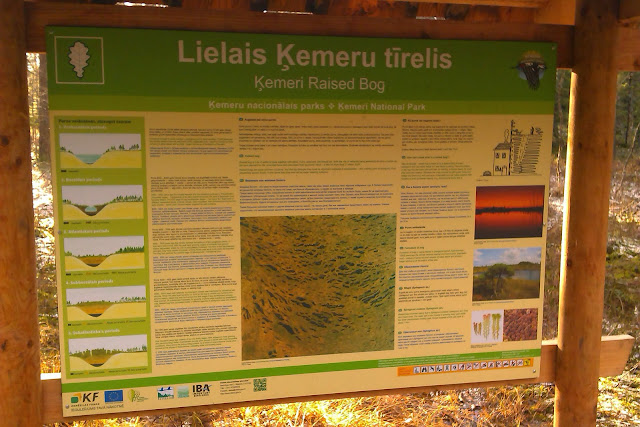 |
| the entrance to the national park |
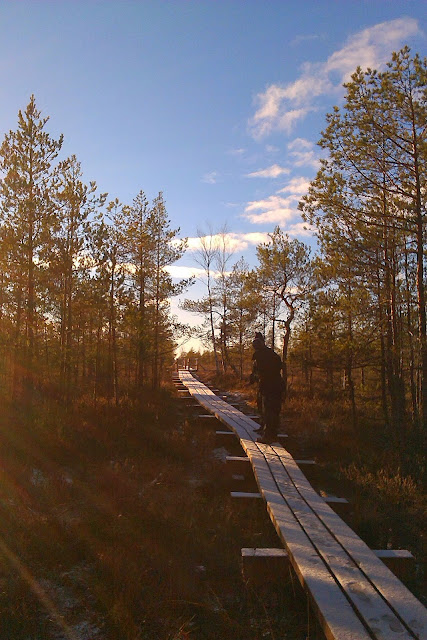 |
| a new nicely designed trail in Kemeru-smardes national park leads into the bog |
 |
| Kemeru-smardes bog national park |
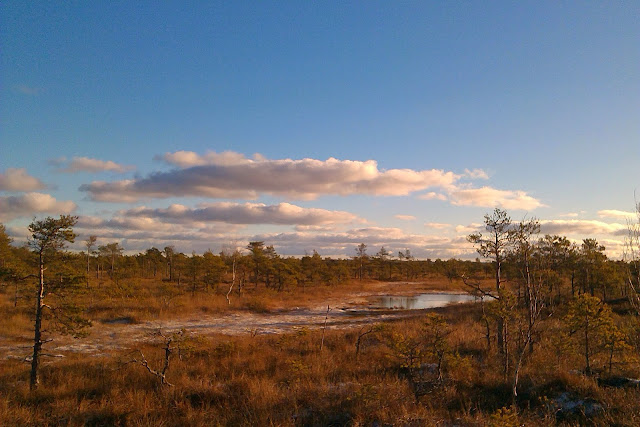 |
| A part of the bog which is quite dry at this time of the year and totally short of birds now |
 |
| Visitors centre and administration of the National Park |
After the national park we headed towards the coast where we expected to find more birds. Before that we stopped in a lovely place for lunch (57.3397, 23.1184).The food was great and owner of the place speaks good english and seems to be a great character with nice sense of humor. We had some pork fillet with mushroom and a meatball soup. After this fairly heavy meal I couldn't move much. It was so heavy that I didn't feel like having dinner at all.
We went to the coast to a place called Mērsrags. Finally some birds. The long expected Long-tailed ducks were nicely sitting nearby. A couple of Red-breasted Mergansers and quite a few Mute Swans and Goldeneye were all that we could tick at this spot.
Well that was about this day. Not much birding but lovely habitats. I quite enjoyed the flat country. There is some character in the setting around. Although it is meant to be a poor country Latvia looks well arranged with nice roads and higher standard than Bulgaria. The houses seem somehow "open" with big windows showing that people have some comfort and nobody seems to be disturbing them. Crime is perhaps not a big problem or at least not in the countryside. Well generally the local currency Lata is stronger than the EURO.
The evening at the field station was fairly cold. We had a rather productive discission about the future if the bird id programme in Latvia, had a few drinks and soon went to bed. In the morning we had a look at a rather romantic floating house which was abandoned many years ago. We got the local stories for scientists that have been working through the early years of their career which revealed more of the identity of this place. About 50+ mute swans and about the same number of Goldeneye were swimming on the lake. At night we had a Bittern calling from the reed beds.
We finished the day in the field station on lake Engure managed by the local biology institute. People here are working mainly on ducks. The lake is known for its rich diversity of birds. A nature protection regime was established in 1957. The lake was included in the Important Bird Area list in 1994, in the Ramsar lists in 1995, and as part of the Natura 2000 network in 2004. A paper from 2012 discusses some of the factors influencing the number of breeding birds on the lake. It is mostly with data collected by the Laboratory of Ornithology, Institute of Biology, in the period 1948–2011. You can download it as a pdf from here or see the abstract only here.
Here everything is with a focus on birds, even the table cover was with bird paintings :)
 |
| table cover in the field station of lake Engure |
Soon we left to the airport. Our trip had to end. An exciting observation at a gas station revealed over a 100 Waxwings which I was hoping that we will see during the trip here. Beautiful birds!
Well that's about it for now. I will spend the afternoon in the old part of the city centre of Riga and have dinner in extraordinary restaurant where they serve dinner not on plates but on paper....
The dinner was pretty...interesting. We went to a place called "3 Chefs". Rather intriguing place. I have linked the name of the place to Trip Adviser for you to see some of the comments about the place. Generally it wasn't spectacularly delicious. Yes it was the most interesting and different dinner I have ever had. There was some 'welcoming' by drawing an abstract drawing by a variety of sauces on a piece paper right in front of you. The souse was edible so using pieces of bread you can collect it from the paper. I must say it was rather intriguing idea. I think the guy that was doing it was a street painter of graffiti or sprays. Then the main dish was a bit strange. I had duck breast with some vegetables. Well, like a 'smart' restaurant there were 3 pieces of duck breast, two pieces of potatoes and a plums souse which was giving a bit of acid flavour. Not my type of thing really but you might enjoy it :) Still it was a nice experience. The beer and the bread were nice ;) The services was also great.
Here is a checklist of the birds that we saw during the trip:
Here is a checklist of the birds that we saw during the trip:
| # | species |
| 1 | Mute Swan - Cygnus olor |
| 2 | Mallard - Anas platyrhynchos |
| 3 | Common Scoter - Melanitta nigra |
| 4 | Long-tailed Duck - Clangula hyemalis |
| 5 | Common Goldeneye - Bucephala clangula |
| 6 | Red-breasted Merganser - Mergus serrator |
| 7 | Red-throated Loon - Gavia stellata |
| 8 | Great Crested Grebe - Podiceps cristatus |
| 9 | Eurasian Bittern - Botaurus stellaris |
| 10 | Common Buzzard - Buteo buteo |
| 11 | Black-headed Gull - Chroicocephalus ridibundus |
| 12 | Mew Gull - Larus canus |
| 13 | Great Black-backed Gull - Larus marinus |
| 14 | European Herring Gull - Larus argentatus |
| 15 | Middle Spotted Woodpecker - Dendrocopos medius |
| 16 | Great Spotted Woodpecker - Dendrocopos major |
| 17 | Eurasian Magpie - Pica pica |
| 18 | Hooded Crow - Corvus cornix |
| 19 | Common Raven - Corvus corax |
| 20 | Western Jackdaw - Coloeus monedula |
| 21 | Bohemian Waxwing - Bombycilla garrulus |
| 22 | Willow Tit - Poecile montanus |
| 23 | Coal Tit - Periparus ater |
| 24 | Crested Tit - Lophophanes cristatus |
| 25 | Great Tit - Parus major |
| 26 | Goldcrest - Regulus regulus |
| 27 | Eurasian Nuthatch - Sitta europaea |
| 28 | Fieldfare - Turdus pilaris |
| 29 | Eurasian Tree Sparrow - Passer montanus |
| 30 | European Greenfinch - Chloris chloris |
| 31 | Eurasian Siskin - Spinus spinus |
| 32 | Hawfinch - Coccothraustes coccothraustes |
Етикети:
bird checklist,
bird ID,
birds,
bogs,
Latvia,
national park,
Travel Advisor,
Trip Advisor
понеделник, 25 ноември 2013 г.
Bulgaria publishes its results on the state of common birds for 2012.
A recent bulletin published by the Bulgarian society for the protection of birds announces summarised trends for the trend categories of common birds for the period 2005-2012.
The publication is in Bulgarian only. Feel free to download and distribute:
The publication is in Bulgarian only. Feel free to download and distribute:
State of Canada's birds
A superb publication features the state of Canada's birds. You can download it from here:
 |
| http://www.stateofcanadasbirds.org/ |
Unpacking Bird Atlas 2007-11
BTO published a new Atlas of breeding birds in the United Kingdom and Ireland. Unprecedented work!
"...the magnificent new atlas of British and Irish birds is the most riveting bird book produced in Britain for years".
Mike McCarthy, The Independent
Етикети:
Atlas 2007-2011,
birds,
birdwatching,
BTO,
Ireland,
United Kingdom
Visit to Latvia
New trip is on its way. This time it is outside Bulgaria. I will be visiting Latvia to meet with colleagues who want to start a new training scheme on bird identification based on a methodology developed by the Nord Trondelag University College in Norway (HiNT). The training aims to increase the number of skillful volunteers in the local breeding bird survey.
Two intense days of discussions and ... birdwatching are coming up. We shall be debating about the process of students recruitment, training implementation, sites selection etc. The discussions will be in the area of lake Engure - rich in birds Ramsar listed area where we are going to be based.
Recently I prepared a report that contains the results from a recent training in Bulgaria. The report will be used as a guideline to other countries willing to undertake identical programmes. Building upon the experience we had in Bulgaria our Latvian colleagues will aim to improve their bird monitoring scheme.
This training is a part of initiatives that I conduct as a part of my professional duties. If interested in implementing a training on bird id in your country please do not hesitate to contact me.
Will report on the meeting outcome and the birdwatching results in later posts.
Two intense days of discussions and ... birdwatching are coming up. We shall be debating about the process of students recruitment, training implementation, sites selection etc. The discussions will be in the area of lake Engure - rich in birds Ramsar listed area where we are going to be based.
Recently I prepared a report that contains the results from a recent training in Bulgaria. The report will be used as a guideline to other countries willing to undertake identical programmes. Building upon the experience we had in Bulgaria our Latvian colleagues will aim to improve their bird monitoring scheme.
This training is a part of initiatives that I conduct as a part of my professional duties. If interested in implementing a training on bird id in your country please do not hesitate to contact me.
Will report on the meeting outcome and the birdwatching results in later posts.
Етикети:
birdID,
birdwatching,
Bulgaria,
Iordan Hristov,
Latvia,
Norway,
training
New paper in Nature advices policy makers
A recent paper published in Nature magazine gives useful advice to policy makers on interpreting conclusions of scientists. It is well known that policy makers and scientists don't quite understand each other. This paper published by Bill Sutherland, a prominent professor by Cambridge university, and colleagues, gives some insight to the topic. The authors have given 20 concepts to policy makers and non-scientists about interpretation of scientific conclusions.
The paper is expected to facilitate the dialogue between the mentioned parties.
You can view and download the paper as a pdf from here.
The paper is expected to facilitate the dialogue between the mentioned parties.
You can view and download the paper as a pdf from here.
Етикети:
advice,
cambridge university,
magazine,
nature,
policy,
science,
william sutherland
понеделник, 18 ноември 2013 г.
Snow Bunting observation
The past weekend was pretty quiet for most of its part. General domestic things dominated. However on the Sunday afternoon I went out for a walk to a reservoir not far from Sofia. It is called Ognyanovo.
The road to the place was pretty quiet but a nice flock of 60+ Collared Doves, a couple of Buzzards and two Great Grey Shrikes made the trip pretty nice and relaxing. When I reached the reservoir I scanned the water for some waterfowl. Pretty quiet. About 70+ Coots, some 40 Mallards and a couple of Great Cormorants. A nice Black-throated Diver made the things a bit more interesting. Flocks of Linnets, Yellowhammers and Goldfinches made it look a bit more lively. Then came the highlight. Approaching the bank on the southern site a small passerine bird took off right under my feet. Flashes of white on the upper wings made me shout out straight away: Snow Bunting. The bird flied away for some time and circled overhead rising higher up in the sky like a soaring bird. Once it got some height it flied away to SW of the reservoir.
This Snow Bunting is the first I see in Bulgaria. It was a female bird and although I couldn't quite have a proper look at the bird to enjoy it, these flashes of white are pretty typical and identifying it is of no question whatsoever. Unfortunately I couldn't photograph it.
This observation made the trip really productive. I recorded all the observation and will upload it in the database of the Bulgarian Society for the Protection of Birds / BirdLife Bulgaria.
The road to the place was pretty quiet but a nice flock of 60+ Collared Doves, a couple of Buzzards and two Great Grey Shrikes made the trip pretty nice and relaxing. When I reached the reservoir I scanned the water for some waterfowl. Pretty quiet. About 70+ Coots, some 40 Mallards and a couple of Great Cormorants. A nice Black-throated Diver made the things a bit more interesting. Flocks of Linnets, Yellowhammers and Goldfinches made it look a bit more lively. Then came the highlight. Approaching the bank on the southern site a small passerine bird took off right under my feet. Flashes of white on the upper wings made me shout out straight away: Snow Bunting. The bird flied away for some time and circled overhead rising higher up in the sky like a soaring bird. Once it got some height it flied away to SW of the reservoir.
This Snow Bunting is the first I see in Bulgaria. It was a female bird and although I couldn't quite have a proper look at the bird to enjoy it, these flashes of white are pretty typical and identifying it is of no question whatsoever. Unfortunately I couldn't photograph it.
This observation made the trip really productive. I recorded all the observation and will upload it in the database of the Bulgarian Society for the Protection of Birds / BirdLife Bulgaria.
Етикети:
birdwatching,
Bulgaria,
guide,
photography,
snow bunting,
trips,
waterfowl
четвъртък, 14 ноември 2013 г.
BBC Natural World 2009 A Highland Haven
Superb video about the lifetime story of a few species from the Scottish Highlands: White-tailed Eagle, Black-throated Diver, Red-deer, Pine Marten and breath-taking landscapes.
Enjoy
The last minutes of the video are about the film. As always these minutes reveal curious information about the film making including how a phone trap was set up :)
понеделник, 11 ноември 2013 г.
Photography weekend
The past weekend wasn't meant to be quite as what it turned out to be :) I meant to just go to my grand parents and do some work there but plans always change. I scheduled something different for the Saturday and spent the day with the family. We did a lovely walk in Vitosha mountain which resulted in a few sunset images. I really missed going into the high mountains so the nearest and the easiest to do was the one next to our place - Vitosha. We started at lunch time and quickly ascended into the mountain tops. It wasn't long before we started walking in the lovely autumn forest enjoying large flocks of Bramblings counting at least 30 birds in a flock. These are the first for this winter that I see. Really pleasant. Also enjoyed some mossy deadwood stumps with little spruce trees starting from it to demonstrate the function of deadwood in a forest. Weather was quite warm understand about 15 degrees C, so we got ourselves a drink and spend couple of minutes on a meadow that was well lit by the Sun. Shortly after that we headed to a mountain top where I wanted to do some sunset shots. The area is quite pictures and presents superb opportunities for landscape photographers. I would image it would be great in pretty much any season. Here is a taste of it:
Since trekking up to the mountains for the sunsets took some time we had do go to the car in the darkness. It was rather pleasant actually. We enjoyed Sofia by night from the mountain top.
On the Sunday I went to a large lake to the south of my place where I intended to spend the day in bird photography and then go to my grandparents. The day at the lake was beautiful. Rather muddy terrain made the joy even grater :) By the time I reached the place for photos I got really muddy up to my knees. The tripod, the jacket, the backpack were all in mud. The shoes were not even visible what make they were. Anyway, I laid down and spent about 8 hours waiting for birds to approach me.
The result is satisfying. Birds didn't quite approach me as much as I wanted, but anyway I managed to get shots of about 10 bird species. The nearest that came was this nice male Teal:
Also a couple of Common Snipes were often landing in less than a metre so I couldn't get many shots of them. However, there was one which stayed in a good distance but amongst some rocks showing only its head. So the other birds I managed to photograph were a few Mallards, Shoveller, nice male Pintail, Great white egret, Grey heron, Greater Flamingos, Black-headed Gull, and a White Wagtail. A water pipit did land relatively close but it stayed amongst the stones nearby so wasn't good for a shot.
Anyway, it was nice to spend some time in the mud. I remember when I was about to start photographing I was pretty sure I will never do this. This heavy gear and laying in the mud is just not what I wanted. Now after I spent some time wading in the mud and seeing the results, I might be more inclined to do it in the future. See what happens.
NOTE: Please feel free to comment on the images. I am happy to receive feedback. Please be constructive and suggest practices or approaches to change what you don't like.
 |
| sunset from Vitosha mountains |
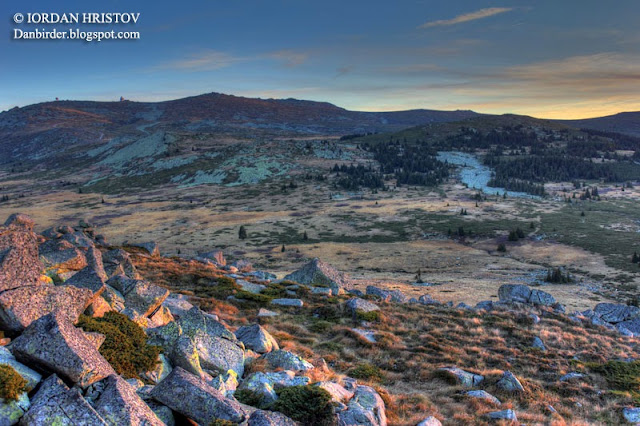 |
| sunset from Vitosha mountains |
 |
| Sofia by night |
The result is satisfying. Birds didn't quite approach me as much as I wanted, but anyway I managed to get shots of about 10 bird species. The nearest that came was this nice male Teal:
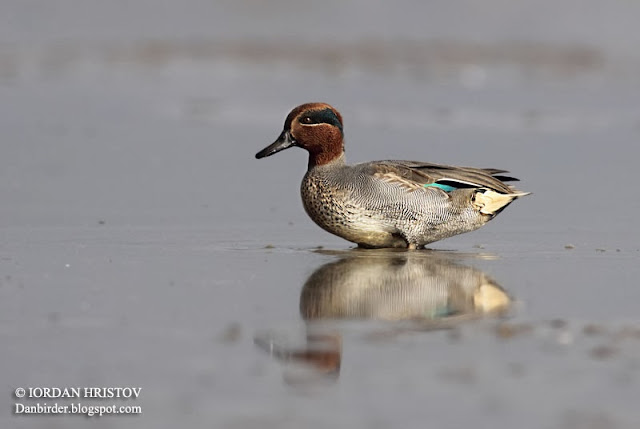 |
| Teal photography |
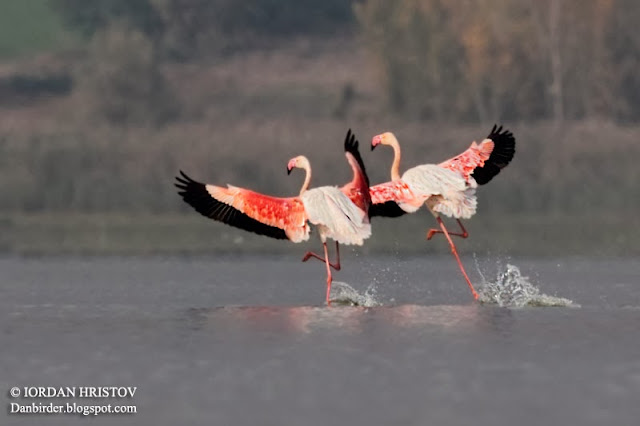 |
| Flamingo photography |
 |
| Shoveler photography |
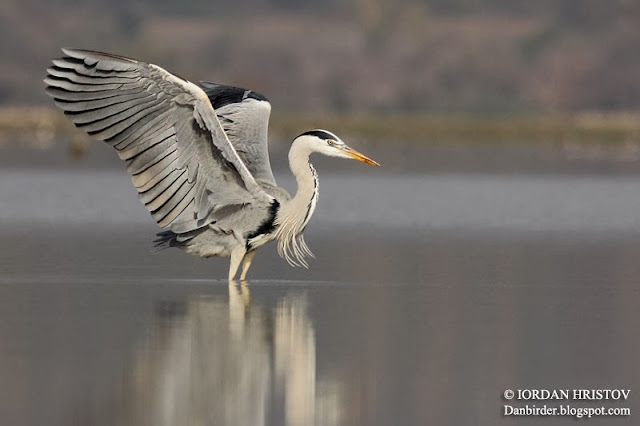 |
| Grey Heron photography |
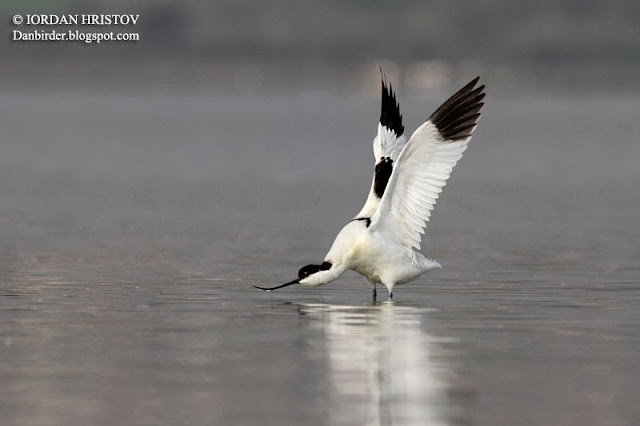 |
| Avocet photography |
 |
| Avocet photography |
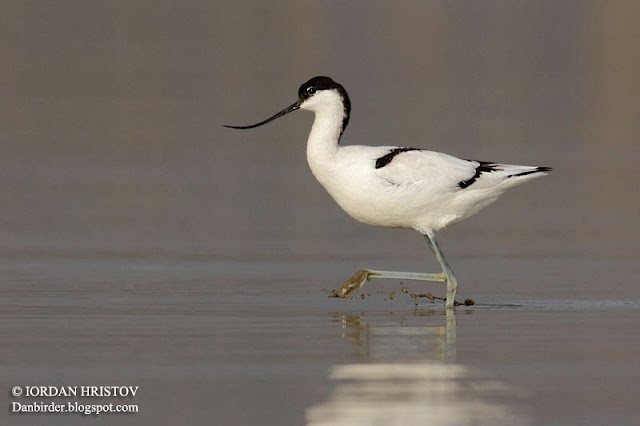 |
| Avocet photography |
Anyway, it was nice to spend some time in the mud. I remember when I was about to start photographing I was pretty sure I will never do this. This heavy gear and laying in the mud is just not what I wanted. Now after I spent some time wading in the mud and seeing the results, I might be more inclined to do it in the future. See what happens.
NOTE: Please feel free to comment on the images. I am happy to receive feedback. Please be constructive and suggest practices or approaches to change what you don't like.
четвъртък, 7 ноември 2013 г.
Waders photography in Bulgaria
Some time after the September session on Waders photography in Bulgaria, I managed to get some time and post process a few images more. Here are the first ones:
Hope I will manage to get some more time and post-process a few more images.
 |
| Redshank photography |
 |
| Redshank photography |
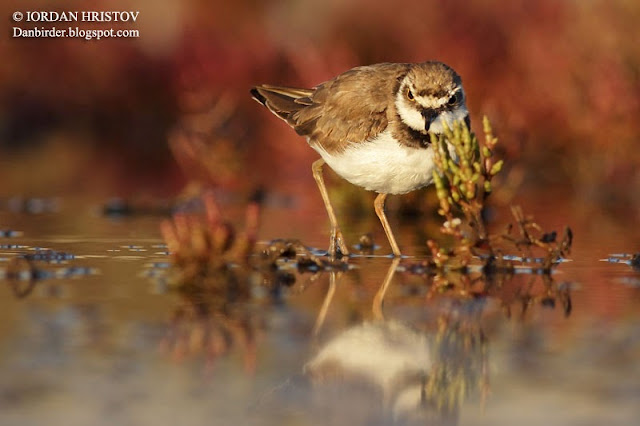 |
| Little ringed plover |
Hope I will manage to get some more time and post-process a few more images.
понеделник, 4 ноември 2013 г.
Buzzard photography session coming up
This weekend I went to a site near Sofia where Buzzards are attracted with bait. There is a photography hide there and I hope that soon we'll be able to show some shots. As a part of its maintenance, a friend and I went to the spot to prepare it and put out the first pieces of bait so that the birds can start learning it. Also we mowed the meadow and set up a few new perches for the birds. In a couple of days I shall go there again to see what the results are and will put out some more bait. Looking forward to seeing the results.
In the meantime, I also managed to go to a reservoir nearby which has some extensive shallow flooded spots. There were quite a few Common Snipes which might be another idea for more photography opportunities. Birds will be there throughout the winter so even a tent might do.
In the meantime, I also managed to go to a reservoir nearby which has some extensive shallow flooded spots. There were quite a few Common Snipes which might be another idea for more photography opportunities. Birds will be there throughout the winter so even a tent might do.
понеделник, 28 октомври 2013 г.
Morning birding in Sofia
The end of autumn shows lovely colors not just in the mountains but also in city parks. The nice sunshine today made me walk to work rather than driving. So I got my bins and started a bit earlier than usual. It was great. Just walking and looking at the tree tops was really pleasant. The birds were pretty active. Although there weren't many species it was still rather pleasant. Great Tit, Nuthatch, and Great Spotted Woodpecker were the few species I registered.
 |
| Sofia city park |
Bear watching in Bulgaria, Belitsa
The past weekend was rather exciting. This time the trip was to an area where I have only driven through but never had the time to really wander around. The area is in between three of the major mountains in the country Rila, Pirin and Rhodopes. We visited friends of ours in a village called Belitsa.
Wildlife watching and trekking is super in the area too. The village of Belitsa is situated at the foot of Rila mountains. Thus the area presents superb opportunities for walking, trekking, photography or just leisure. You wake up and enjoy the nearly three thousand peaks of Pirin mouintains.
We arrived late on Friday evening. The plan for the next day was to do some trekking in Rila mountains. So we did. Since it was a weekend, we decided to make a walk rather than a serious hike. We left the house at about 12 and soon we were at our starting point in Semkovo resort. A place which people want to promote and convert into a ski resort. Quite a strange idea having in mind the slopes have southern orientation and the infrastructure there is not quite right. Moreover one of the biggest resorts in the country is just next door and this place doesn't even have basic grounds for comparison.
From Semkovo, we started our trip to Macedonia chalet. Lovely little place on the top of the mountain situated at about 2200 m above the sea level. This height presents opportunities for open view to the valley of Blagoevgrad. The area to the north of the chalet is quite wild with spots for Hazel Grouse and Brown Bears.
The trail to the chalet goes along a small river with a few small waterfalls. Right next to the chalet is one of the best biosphere reserves in the country called "Parangalitsa". The reserve has the biggest populations of the endemic plant called Primula deorum. Unfortunately some poachers were cutting the trees in the National Park. The most ridiculous thing is that a guard from the Park Administration was at the place.
Loads of Nutcrackers everywhere along the way. Apparently the juveniles are quite noise but pretty shy to stay for a nice shot. A few Crested Tit, Siskin and a single Black Redstart. I was aiming for a Pygmy Owl but were not successful.
On the Sunday we went to a sanctuary for bears. The place become known for its funding from the well known Brigitte Bardot and its international charity foundation "Four paws". The bears are just so fantastic. I wish I see them more often in their wild environment. Most of the animals were not feeling well but a few of them had pretty glossy fur. They seem to be getting ready for winter.
All of these sightings and landscapes were along the autumn colors of old growth beach forest. It really is a place to be.
I did this trip as a part of the activities of my company. See more information about its acitivities on my website here: www.NatureMonitoring.com See more of my photos in the gallery here.
Wildlife watching and trekking is super in the area too. The village of Belitsa is situated at the foot of Rila mountains. Thus the area presents superb opportunities for walking, trekking, photography or just leisure. You wake up and enjoy the nearly three thousand peaks of Pirin mouintains.
We arrived late on Friday evening. The plan for the next day was to do some trekking in Rila mountains. So we did. Since it was a weekend, we decided to make a walk rather than a serious hike. We left the house at about 12 and soon we were at our starting point in Semkovo resort. A place which people want to promote and convert into a ski resort. Quite a strange idea having in mind the slopes have southern orientation and the infrastructure there is not quite right. Moreover one of the biggest resorts in the country is just next door and this place doesn't even have basic grounds for comparison.
From Semkovo, we started our trip to Macedonia chalet. Lovely little place on the top of the mountain situated at about 2200 m above the sea level. This height presents opportunities for open view to the valley of Blagoevgrad. The area to the north of the chalet is quite wild with spots for Hazel Grouse and Brown Bears.
 |
| Landscape photography, Macedonia chalet |
 |
| Waterfall photography in Bulgaria |
On the Sunday we went to a sanctuary for bears. The place become known for its funding from the well known Brigitte Bardot and its international charity foundation "Four paws". The bears are just so fantastic. I wish I see them more often in their wild environment. Most of the animals were not feeling well but a few of them had pretty glossy fur. They seem to be getting ready for winter.
 |
| Bear watching in Bulgaria |
I did this trip as a part of the activities of my company. See more information about its acitivities on my website here: www.NatureMonitoring.com See more of my photos in the gallery here.
понеделник, 21 октомври 2013 г.
Weekend walk in Plana, Sofia, Bulgaria
Weather in the last couple of days stays still warm before the coming winter. This made me go out for a walk to a village not far from our capital Sofia. Didn't quite know where to go. What I knew was that I want to explore new areas I hadn't visited before. A few arrangements and here we are on the road to the Eastern Part of Vitosha mountain just next to Sofia.
Lovely autumn colors. Even managed to do some birding in an area with conifer trees. The highlights were Black Woodpecker, Crossbill, Nutcracker, Crested Tit, Marsh Tit, Woodlark and that's about it. But it was great. A lovely and relaxed Sunday. On the way back to the car we had a great end of the day with this marvelous sunsets over the landscape. Hope I have managed to show at least a fraction of the beautiful scene.
Lovely autumn colors. Even managed to do some birding in an area with conifer trees. The highlights were Black Woodpecker, Crossbill, Nutcracker, Crested Tit, Marsh Tit, Woodlark and that's about it. But it was great. A lovely and relaxed Sunday. On the way back to the car we had a great end of the day with this marvelous sunsets over the landscape. Hope I have managed to show at least a fraction of the beautiful scene.
вторник, 15 октомври 2013 г.
Autumn in Eastern Rhodopes in Bulgaria
The past weekend was a marvelous autumn experience for landscape photography ... Enjoy.
On Friday afternoon we made our way to the Eastern Rhodopes to establish a bird photography hide. We arrived late in the afternoon and met some friends who suggested there is carrion in front of one of the vulture feeding sites and place for photographing them. Excitement took over and we quickly made the arrangement to go into the hide. Recent news suggested there was opportunity to photograph wild wolves so I didn't want to miss this chance. After a few drinks with our friends we decided to go into the hide during the night and spend it there. This is expected to increase our chances for photographing wolves and vultures.
We arrived shortly after 1.00 am and a pack of not wolves but dogs met us at the site. We entered in full excitement and quickly went to bed. The cozy bunks and our sleeping bags made the night quite warm and pleasant. We woke up at about 6,30. It was still pretty dark but a fox was feeding on the carcass. What a place. It would be great if it stays until its bright sun. Unfortunately it disappeared with the coming sunlight. A raven turned up presenting nice opportunities for some art photography shots. Here it is:
After a few hours in the hide we ended up with nothing but this raven. We observed about 25 species but no photos. Amongst the birds observed are a young Goshawk chasing the birds around, a young and an adult Golden Eagle which we wanted to land but no luck, also Cirl Bunting, Wood Lark, Peregrine Falcon, Eurasian Sparrowhawk, etc.
The sun broke through the mist and wonderful landscapes tempted us to leave and spend our time for landscape photography. Here are some of the results:
We had wonderful time in photographing the autumn landscapes of Eastern Rhodopes. Totally recommended to everyone who wishes to do it.
On Friday afternoon we made our way to the Eastern Rhodopes to establish a bird photography hide. We arrived late in the afternoon and met some friends who suggested there is carrion in front of one of the vulture feeding sites and place for photographing them. Excitement took over and we quickly made the arrangement to go into the hide. Recent news suggested there was opportunity to photograph wild wolves so I didn't want to miss this chance. After a few drinks with our friends we decided to go into the hide during the night and spend it there. This is expected to increase our chances for photographing wolves and vultures.
We arrived shortly after 1.00 am and a pack of not wolves but dogs met us at the site. We entered in full excitement and quickly went to bed. The cozy bunks and our sleeping bags made the night quite warm and pleasant. We woke up at about 6,30. It was still pretty dark but a fox was feeding on the carcass. What a place. It would be great if it stays until its bright sun. Unfortunately it disappeared with the coming sunlight. A raven turned up presenting nice opportunities for some art photography shots. Here it is:
| Raven photography in Bulgaria |
The sun broke through the mist and wonderful landscapes tempted us to leave and spend our time for landscape photography. Here are some of the results:
 |
понеделник, 9 септември 2013 г.
Waders photography in Bulgaria
This time I happened to be on the coast in the right time. I really needed to spend some time off from work, photographing birds and get some break from the daily activities. For a couple of days I had to conduct a course on bird id with local students. After that was my time. I had two days to spend waiting for my girlfriend to come and there I go. For these two days I only managed to get three photography sessions but I am quite pleased with the results. Lots of waders around and finally managed to get a few shots of Redshank, Dunlin, Curlew Sandpiper, Little Stint, Wood Sandpiper, Greenshank, Little-ringed and Ringed Plovers to name but a few. One of the rarest birds I managed to photograph is the Broad-billed Sandpiper but my favourite of all are the photos of Common Snipe. These lovely birds were really tame pretending I was not there. They landed only about 1,5 m from me and stayed there for a couple of minutes. What a superb little creature. I had never had such an experience. Wanted to absorb and memorize every single feather of their plumage. Really stunning.
Here I will start with a few images. More are coming soon but it will take me some time to go over the 50 GB of photos.
The sunset in the protected area is just fantastic. The pylons are not very natural but birds love them for nesting.
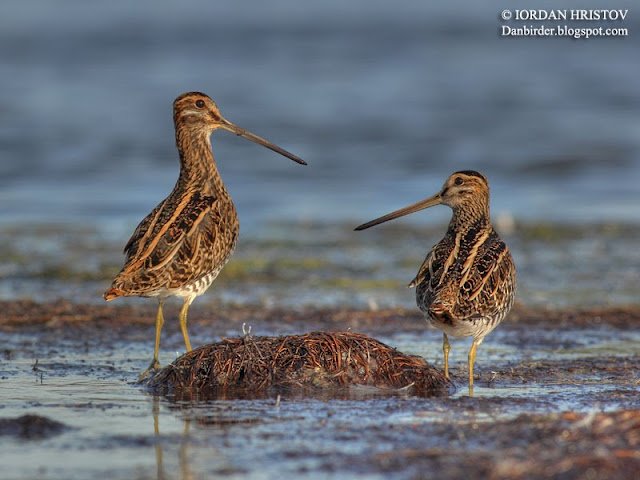 |
| Common Snipe photography |
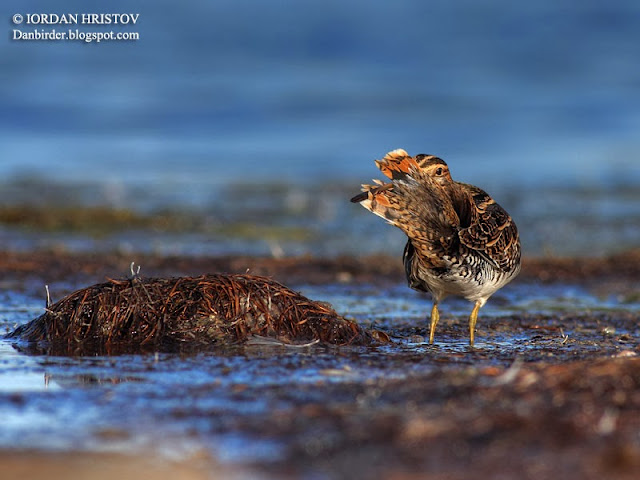 |
| Common Snipe photography |
 |
| Curlew Sandpiper photography |
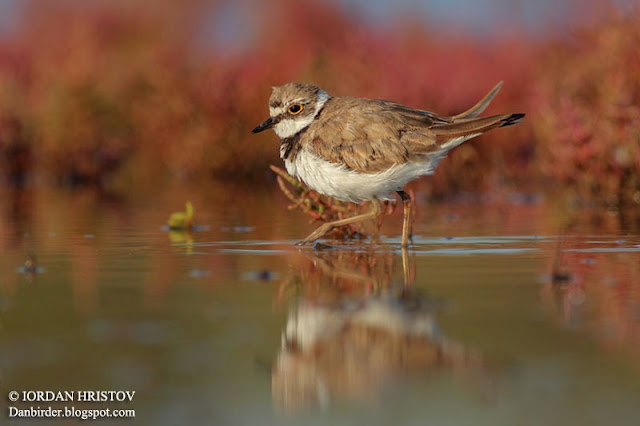 |
| Little Ringed Plover photography |
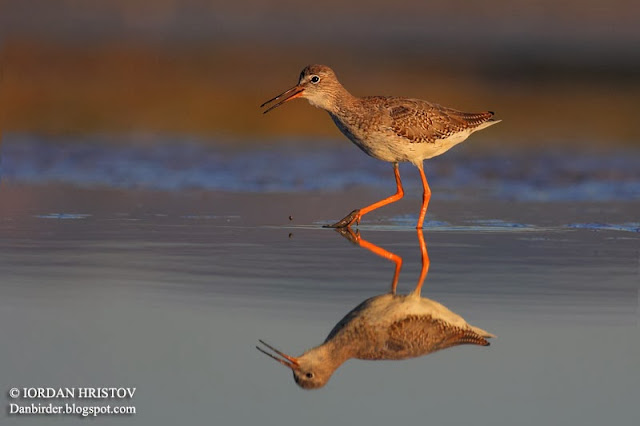 |
| Redshank photography in Bulgaria |
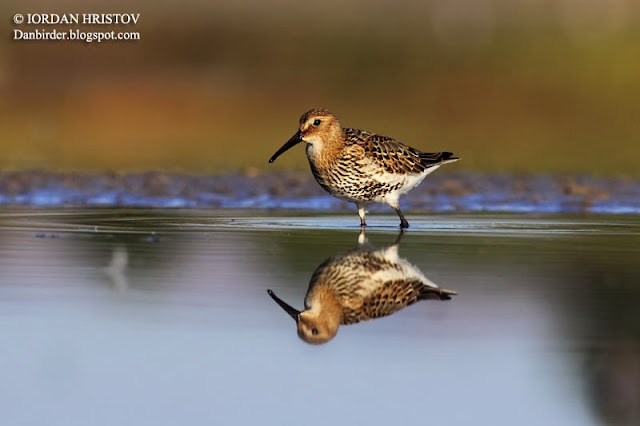 |
| Dunlin photography in Bulgaria |
 |
| Poda Nature Reserve © Iordan Hristov |
четвъртък, 29 август 2013 г.
Coastal bird photography and migration in Bulgaria
In the past weekend I had to go to the coast and give a talk on the State of common birds in Bulgaria. I attended a conservation camp where a group of over 80 people gathered to hear and learn more about the conservation activities of the Bulgarian Society for the Protection of Birds. Since the presentation took me only about an hour I had enough time to do some birding and photography in the peak time of bird migration.
Early morning and late afternoon was the time for photography and the rest was for observing migration of soaring birds at the watchpoint. Regardless of the late arrival in the camp I managed to hear my alarm going on at 4.00 a.m. Grabbed my camera and gear and off I went to some saltpans nearby. It was steaming with birds but of course they were distance away. We did managed to get a few tamе ones nearby. Here is the first image from that morning:
Lots of Kentish Plovers, Sandwitch Terns, Meditterranean Gulls, Wood Sandpipers, Green Sandpipers, Pygmy Cormorants and many others. We left this place at about 9.00 when the light wasn't good for photography any more. After a brief breakfast we sat at the watchpoint. Lovely place right in the middle of a bottleneck corridor where soaring birds gather in good numbers. Short-toed Eagle, Lesser spotted Eagle, Osprey, Booted Eagle, 100+ Honey Buzzards, 40+ Black Kites, Montagu's Harriers, Levant Sparrowhawk and ... some 13 000 White Storks in a single flock. What a sight. and it is still the beginning of migration. I think I will be going there again the coming weekend. This time my work will be to travel around and teach Bulgarian students on Bird ID. Looking forward to it.
Stay tuned for more images and birding stories.
Early morning and late afternoon was the time for photography and the rest was for observing migration of soaring birds at the watchpoint. Regardless of the late arrival in the camp I managed to hear my alarm going on at 4.00 a.m. Grabbed my camera and gear and off I went to some saltpans nearby. It was steaming with birds but of course they were distance away. We did managed to get a few tamе ones nearby. Here is the first image from that morning:
 |
| Little Ringed Plover (juv.) and Lapwing in Bulgaria |
Stay tuned for more images and birding stories.
Абонамент за:
Публикации (Atom)




